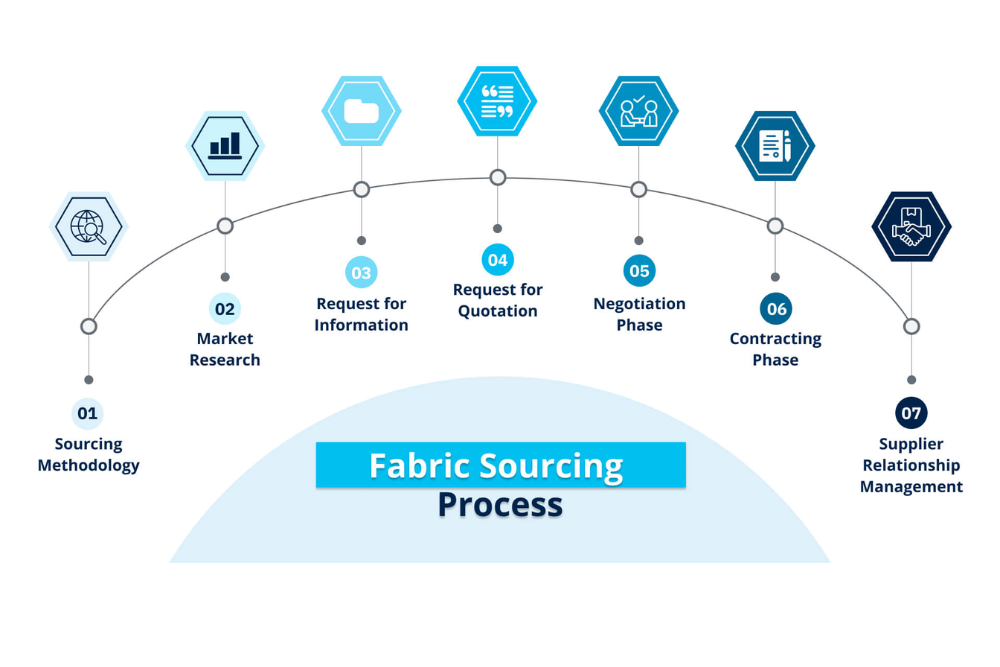Introduction
In the dynamic world of fashion, fabric sourcing stands as a pivotal decision that influences not only the aesthetics and quality of garments but also the ethical, environmental, and economic footprint of a brand. Designers and manufacturers grapple with the choice between local and global sourcing, each presenting its own set of advantages and challenges. This comprehensive exploration delves into the nuances of both approaches, offering insights to guide informed sourcing strategies.
Understanding Fabric Sourcing
Fabric sourcing refers to the process of procuring textiles required for garment production. This encompasses identifying suppliers, evaluating material quality, negotiating costs, and ensuring timely delivery. The sourcing strategy adopted can significantly impact a brand’s supply chain efficiency, product quality, and sustainability goals.
Local Fabric Sourcing
Advantages
- Reduced Environmental Impact: Sourcing fabrics locally minimizes transportation distances, leading to a lower carbon footprint. This aligns with sustainable practices by reducing greenhouse gas emissions associated with long-haul shipping.
- Support for Local Economies: Engaging with local suppliers fosters economic growth within the community, creating jobs and promoting regional development.
- Enhanced Communication and Collaboration: Proximity facilitates better communication, allowing for quicker feedback loops, easier quality control, and stronger relationships with suppliers.
- Faster Turnaround Times: Local sourcing can lead to shorter lead times, enabling brands to respond swiftly to market trends and consumer demands.
- Preservation of Traditional Craftsmanship: Collaborating with local artisans helps preserve indigenous textile techniques and cultural heritage, adding unique value to products
Challenges
- Limited Variety and Volume: Local markets may offer a narrower range of fabrics and might not meet large-scale production demands.
- Higher Costs: Local production can be more expensive due to higher labor and operational costs, potentially affecting profit margins.
- Infrastructure Limitations: Some regions may lack advanced manufacturing facilities or technology, impacting the consistency and scalability of production.
Global Fabric Sourcing
Advantages
- Access to Diverse Materials: Global sourcing opens doors to a vast array of fabrics, including specialized and innovative textiles not available locally.
- Cost Efficiency: Manufacturing in countries with lower labor costs can result in significant savings, making it an attractive option for budget-conscious brands.
- Scalability: International suppliers often have the capacity to handle large orders, supporting brands as they scale operations.
- Technological Advancements: Certain regions specialize in cutting-edge textile technologies, offering access to high-performance and sustainable materials.
Challenges
- Longer Lead Times: Shipping fabrics across continents can result in extended delivery times, affecting the agility of the supply chain.
- Communication Barriers: Differences in language, time zones, and business practices can complicate coordination and quality assurance.
- Ethical and Environmental Concerns: Ensuring fair labor practices and environmental compliance can be more challenging with distant suppliers.
- Supply Chain Vulnerabilities: Global events, such as pandemics or geopolitical tensions, can disrupt international supply chains, leading to delays and increased costs.
Sustainability Considerations
Sustainability has become a central concern in fabric sourcing decisions. Local sourcing often aligns with eco-friendly practices by reducing transportation emissions and supporting sustainable agriculture. However, global sourcing can also contribute to sustainability when partnering with certified suppliers who adhere to environmental standards and offer innovative, sustainable materials.
Case Studies
Local Sourcing: The North Face’s Backyard Project
The North Face launched the Backyard Project, producing garments entirely from materials sourced within 150 miles of their headquarters. This initiative highlighted the feasibility of local sourcing in reducing environmental impact and supporting regional economies.
Global Sourcing: H&M’s Conscious Collection
H&M’s Conscious Collection sources sustainable materials like organic cotton and recycled polyester from various global suppliers. By leveraging international partnerships, H&M combines scale with sustainability, offering eco-friendly products to a broad market.
Strategic Decision-Making in Fabric Sourcing
When determining the optimal sourcing strategy, brands should consider:
- Brand Identity and Values: Align sourcing practices with the brand’s mission and customer expectations.
- Market Demands: Assess consumer preferences and demand for sustainability, quality, and uniqueness.
- Cost-Benefit Analysis: Evaluate the financial implications, balancing cost savings against potential risks and ethical considerations.
- Supply Chain Resilience: Diversify sourcing to mitigate risks associated with geopolitical instability or natural disasters.
- Regulatory Compliance: Ensure adherence to international labor laws and environmental regulations.
